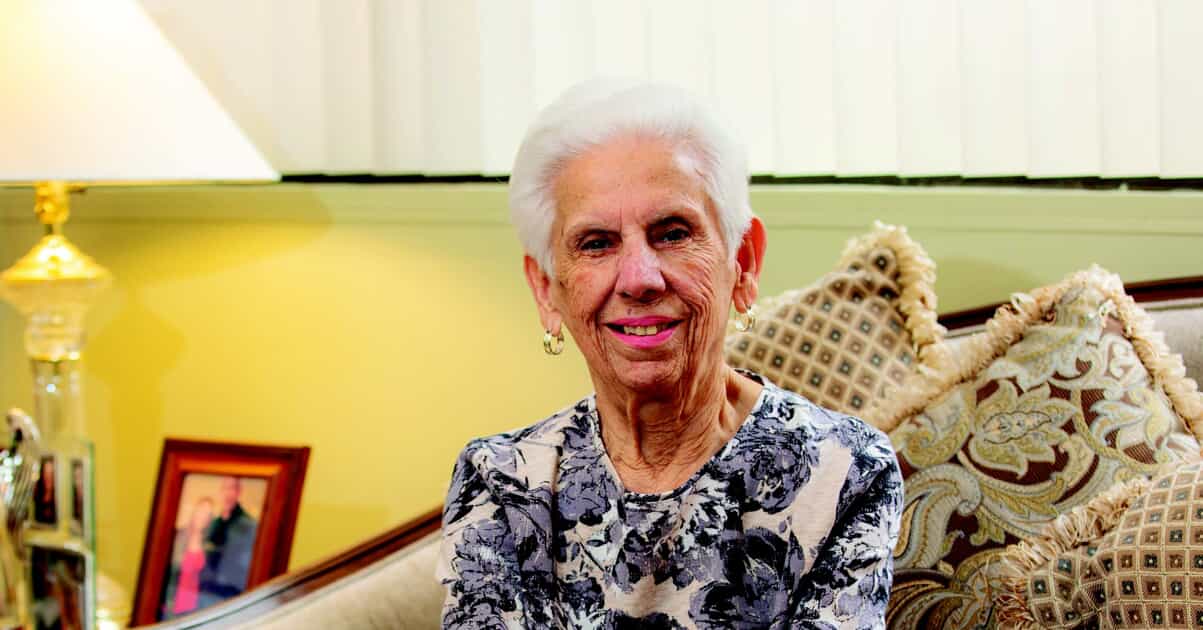"The surgery was a piece of cake ... I could hardly believe I had practically no recovery at all."

A minimally invasive procedure at Newark Beth Israel Medical Center was the right choice for a woman with aortic stenosis.
At the beginning of 2019, Elizabeth Versacio, then 83 years old, felt in good shape. “I was always a walker,” she says. “I could walk from here to there and God knows where.”
“Here” is the independent-living apartment that Elizabeth occupies in a Jersey City senior residence. “There” might be the grocery store four-and-a-half blocks away. “I have to shop for myself,” she says. “It was never a problem.”
But something changed with the new year. Elizabeth began having trouble breathing. “That had never happened before,” she says. In May and July 2019, she was hospitalized to drain fluid that had built up in her lungs. Walking to the market was now out of the question. “I missed that,” she says. “But I was out of breath all the time.”
Fluid in her lungs wasn’t the only problem. Doctors discovered she had aortic stenosis. The valve in her aorta—the large blood vessel that carries blood from the heart to the rest of the body—had narrowed, contributing to her breathing difficulties.
Elizabeth’s condition was serious.
“Aortic stenosis is a progressively worsening disease,” says board-certified surgeon Arash Salemi, MD, newly appointed Clinical Chairman of Cardiothoracic Surgery for RWJBarnabas Health, Northern Region, Chairman of Cardiothoracic Surgery at Newark Beth Israel Medical Center (NBI) and a member of RWJBarnabas Health medical group. “The two-year survival rate for untreated people with symptoms of aortic stenosis is only 50 percent.”
An Innovative Option
Yet until recently, treatment for aortic stenosis had significant limits.
“There is no medical therapy, diet or exercise for this condition,” Dr. Salemi says. “The only available therapy for many years was valve replacement with open-heart surgery.”
Even so, he says, up to two-thirds of patients with aortic stenosis over age 75 were not given open-heart surgery.
Elizabeth provided almost a textbook example of why: Many older people with aortic stenosis also have other serious conditions or are frail in ways that could complicate an intricate major surgery.
“She absolutely would not have been a good candidate for open-heart surgery,” says Ravi Karanam, MD, cardiothoracic surgeon at NBI and Director of the Cardiothoracic Residency Program at RWJBarnabas Health.
Fortunately, NBI could offer another option:transcatheter aortic valve replacement (TAVR). This minimally invasive procedure anchors a new aortic valve on top of the existing one via a catheter that’s inserted in an artery in the groin and threaded to the heart through blood vessels.
TAVR is radically different from open-heart surgery. Open-heart surgery can last from three to four hours and includes general anesthesia, the use of a heart-lung machine, the stopping and restarting of the heart and a five-to-seven-day hospital stay, followed by about a month to recover.
“In contrast, TAVR is a one-hour procedure that does not require general anesthesia or a breathing machine, and the patient goes home the same day or the next,” Dr. Karanam says. “Stress on the body is relatively minimal, and people are back to normal activity in a matter of days.”
TAVR initially was reserved for high-risk patients like Elizabeth Versacio. But research by Dr. Salemi and others at multiple centers nationwide, including NBI, demonstrated that TAVR outcomes in lower-risk patients are at least as good as—and possibly better than—outcomes for aortic stenosis patients who have open-heart surgery.
In 2019, the Food and Drug Administration approved TAVR for lower-risk patients. “We essentially are now able to offer it to anyone with aortic stenosis,” says Dr. Salemi, who has performed more than 2,000 TAVR procedures in addition to having deep experience with open-heart operations. “TAVR is a revolutionary technology and represents a paradigm shift in how we treat aortic stenosis.”
Back to the Market
Despite TAVR’s advantages, Elizabeth was reluctant to undergo the procedure. “I was against surgery, period,” she says. “I was now 84 and afraid to take a risk, let’s be honest.” Then members of her large extended family weighed in.
“There’s always somebody here, and we talked about it,” Elizabeth says. “They’d say, ‘What do you mean you don’t want to do it?’ I had lost my older sister in September and they said, ‘You want a longer life—it’s something you have to do.’ I guess they talked some sense into me.”
Elizabeth had her TAVR surgery on Thursday, December 19. On Saturday, she went home. “I could have gone home the next day. I almost hate to admit it but the surgery was a piece of cake, it was fabulous. I could hardly believe I had practically no recovery at all.”
Now that Elizabeth’s aortic valve is fixed, doctors can turn to resolving her lung issue. But she’s already made a turnaround. “My breathing is so much better after surgery,” she says. She has returned to walking to the market for her groceries.
Several residents in her building have gone through open-heart surgery. “I’ve seen how long their recovery took,” Elizabeth says. “I would recommend my surgery to anybody.”
Don’t delay getting the care you need. Your heart doesn’t beat just for you. Get it checked. To reach a Newark Beth Israel Medical Center cardiac specialist, call (888) 724-7123 or request an appointment.
